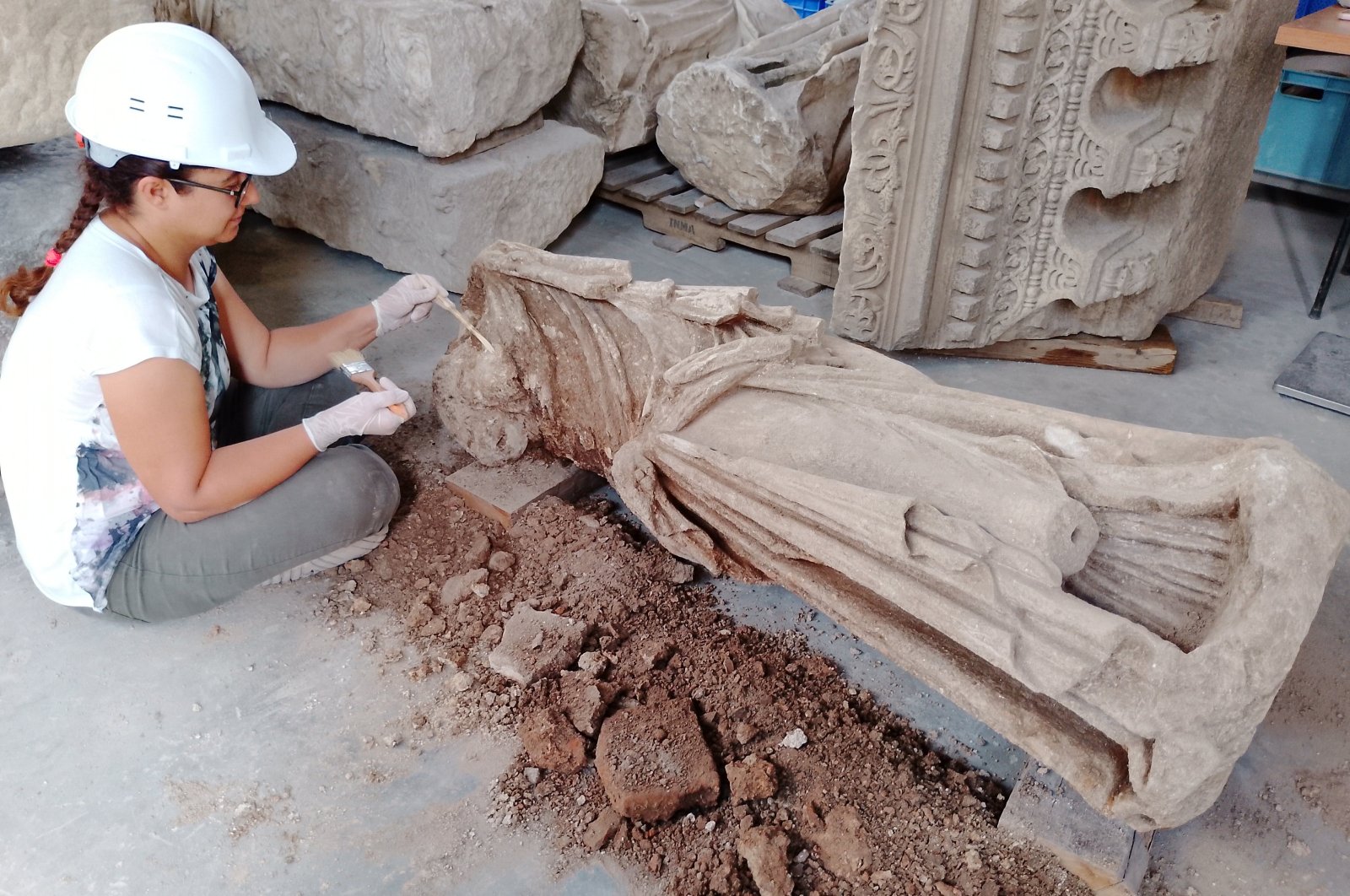
In a remarkable archaeological discovery, the statue of "Dancing Moses," an iconic figure from ancient mythology, has emerged after an astonishing 2,175 years in Türkiye's ancient city of Stratonikeia, in Muğla.
According to the Ministry of Culture and Tourism, this unearthed statue is the sole original Hellenistic period piece attributed to a work famously replicated during the Roman period.
Historically, the "Dancing Moses," considered one of the muses born from the union of Zeus and Mnemosyne, was reputedly crafted by Philiskos, a renowned sculptor from the second century B.C. While various Roman period reproductions of this piece exist across Anatolia and Greece, the newly discovered statue from Stratonikeia distinguishes itself as the sole authentic work by Philiskos from the Hellenistic era.
The statue's unearthing in Stratonikeia holds significance for archaeologists as it attests to Philiskos's artistic presence within the ancient city during the Hellenistic period.
During excavations within the frigidarium of the Roman bath in Stratonikeia, the statue, along with its pedestal, was recovered. However, the head and arms of the sculpture were notably absent from the findings.
Previously, a copy of this revered statue had been found in the Roman baths of the ancient city of Perge, along with another in Rhodes, further underscoring its widespread replication during the Roman period.
Following necessary restoration work, the sculpture is slated for display at the Muğla Museum, providing a rare glimpse into the Hellenistic craftsmanship and the mythological muses that have captured imaginations for centuries.
